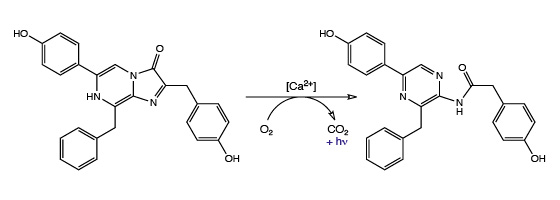Welcome to Iris Biotech
For better service please confirm your country and language we detected.

For better service please confirm your country and language we detected.

Thank you very much for your interest in our products. All prices listed on our website are ex-works, Germany, and may attract customs duties when imported.
You may/will be contacted by the shipping company for additional documentation that may be required by the US Customs for clearance.
We offer you the convenience of buying through a local partner, Peptide Solutions LLC who can import the shipment as well as prepay the customs duties and brokerage on your behalf and provide the convenience of a domestic sale.
Continue to Iris Biotech GmbHSend request to US distributorPublished on 23/01/2013
A prominent luciferase group was first discovered in Coelenterataand the corresponding light emitting molecule was therefore named coelenterazine. Coelenterazine is a cell-permeable substrate for many aquatic organism photoproteins such as aequorin, obelin, Rluc ( Renilla reniformisluciferase) or Gluc ( Gausserialuciferase). Some organisms exhibit molecules similar to coelenterazine, e.g. coelenterazine h.
Coelenterazine reacts with the photoproteins in presence of oxygen thus enabling them to release coelenteramid, CO2 and one photon at a wavelength of 465 nm. It can also be used for detecting changes in intracellular Ca2+ concentration in cells that have been transfected with apoaequorin cDNA. Coelenterazine also acts as a powerful antioxidant.

 |
 |
|
 |
 |
|
 |